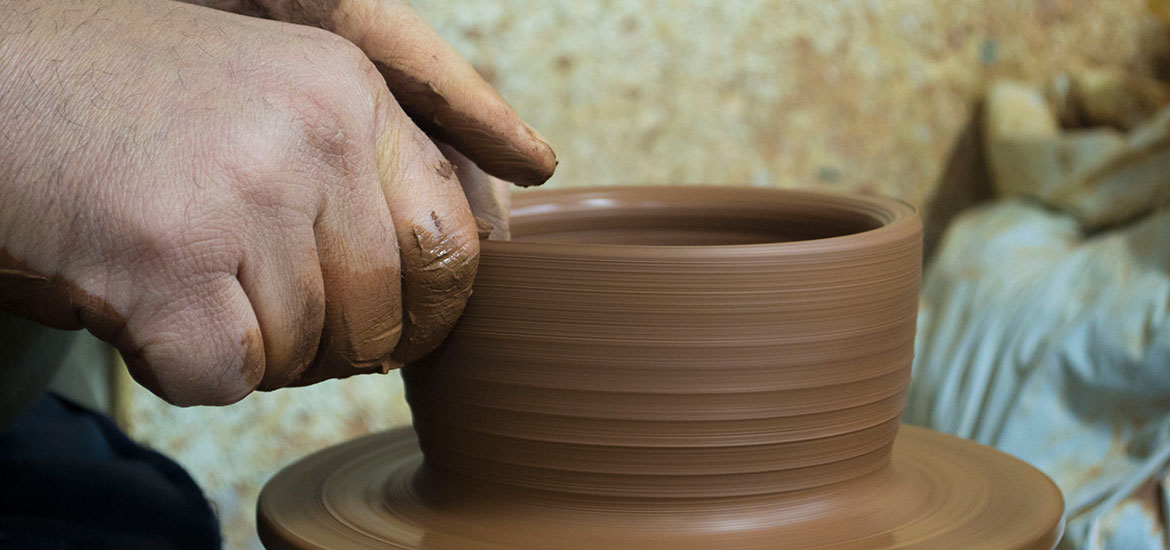
The word “ceramics” originates from the Greek word Keramikos (the potters ’ quarter of ancient Athens), which in turn comes from keramos (pottery’s clay). In art history, ceramics mean art objects, such as tableware, ceramics for everyday use and decorative purposes.
The Greeks’ design creation in antiquity is depicted on the surface of pots, that the artisans began to create and decorate from the early times in ceramic workshops. It was there that the shapeless mass of the clay was initially formed on the lathe by the potter’s skilled hands. Sometimes, it was shaped into a large pot like a round jar on a pointed or flat base, called pithos (jar), used to store wine, oil, figs or salted food; other times, into an oblong pot with two handles (ears) and a long neck, called amphoreas (urn), which was used to store wine and oil. Its opening was sealed with a resin layer and its base was usually pointed to be partly embedded on the ground. Sometimes, the clay was shaped into a pot with a very large opening and two handles. It was kratiras (crater) and was used to mix wine and water on the table.

